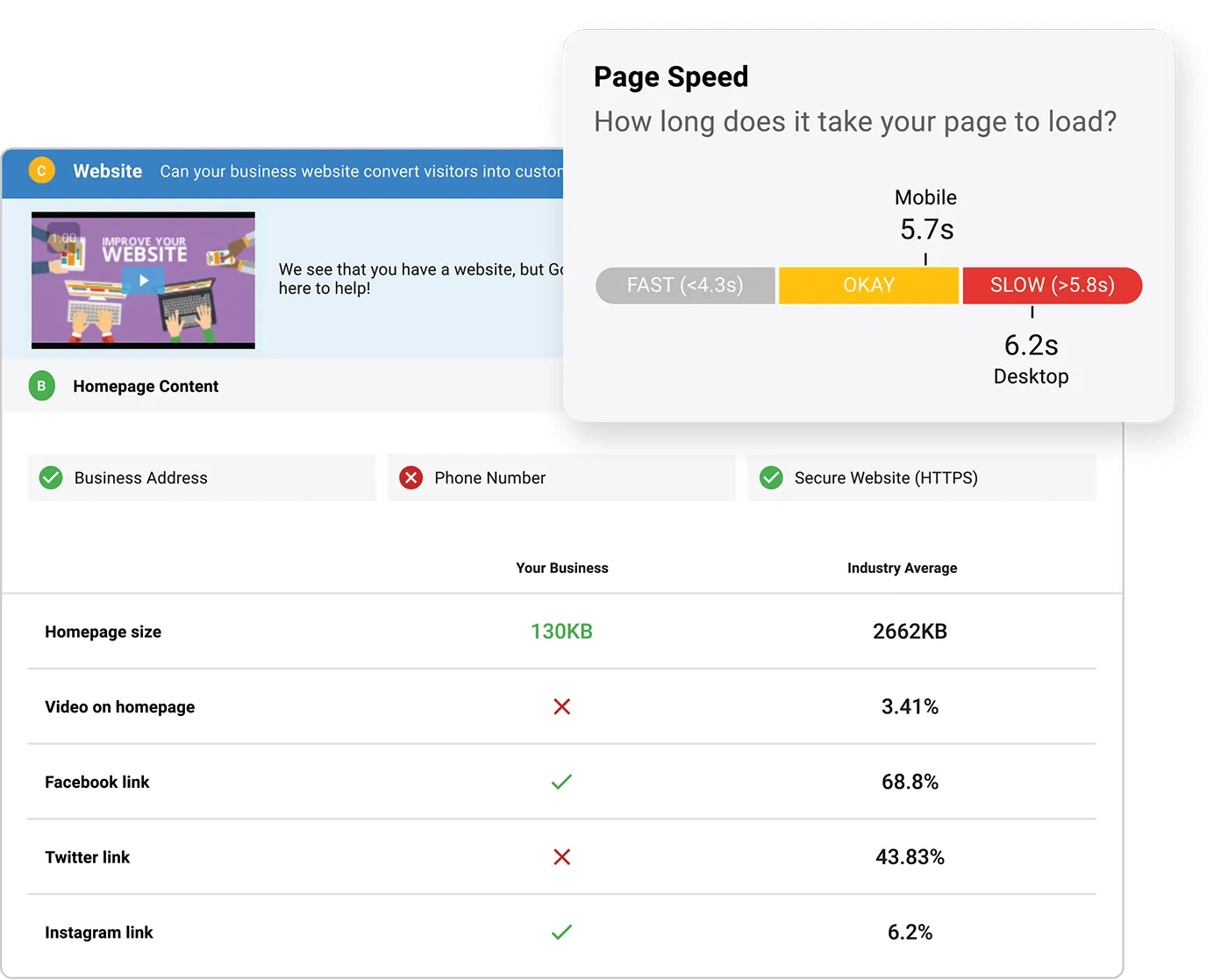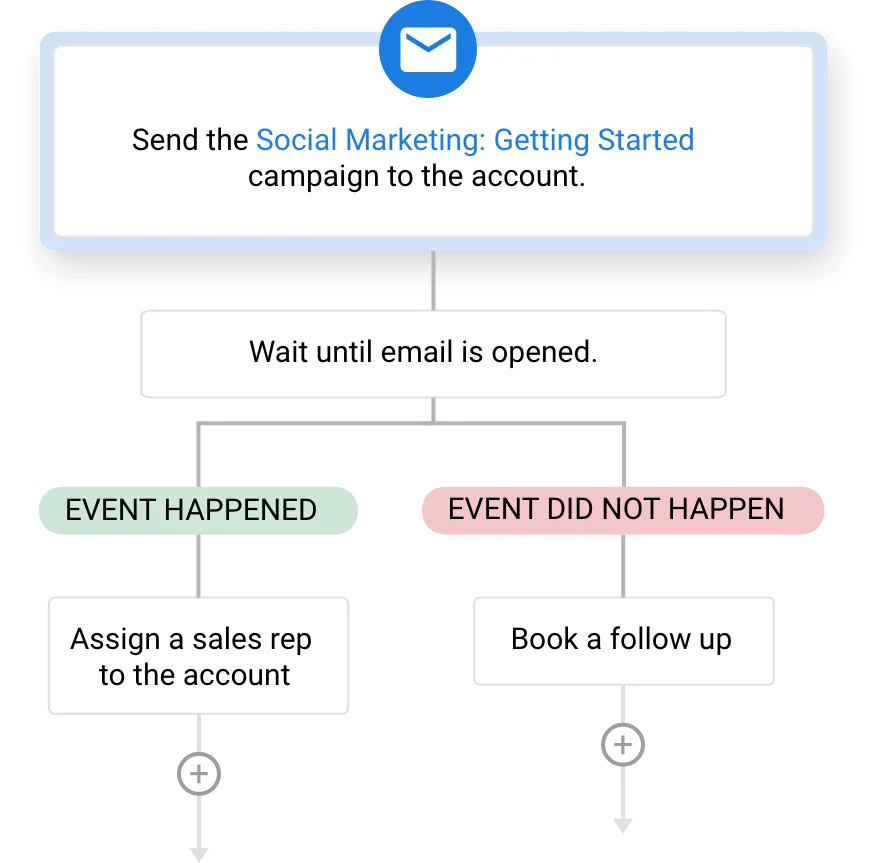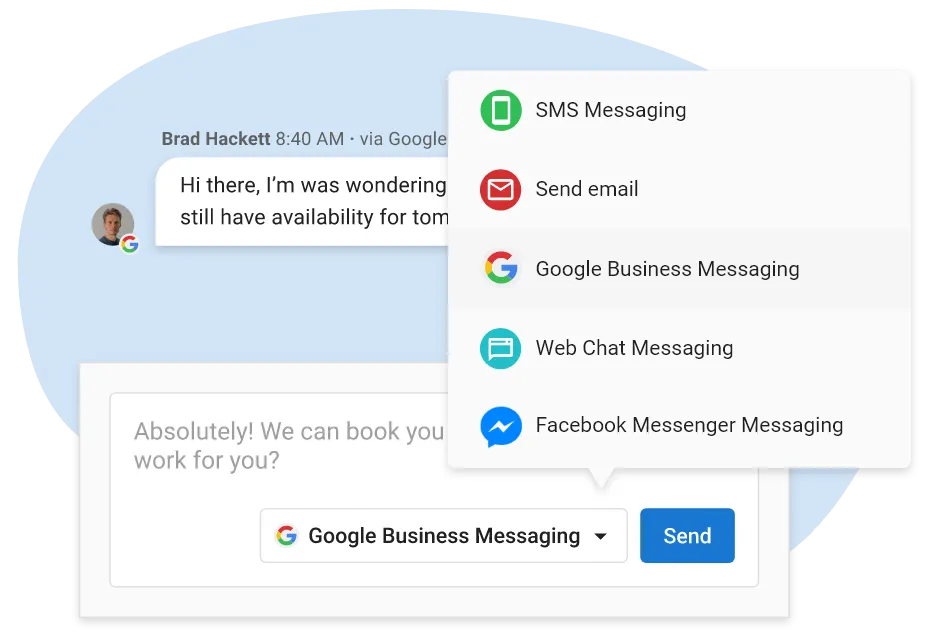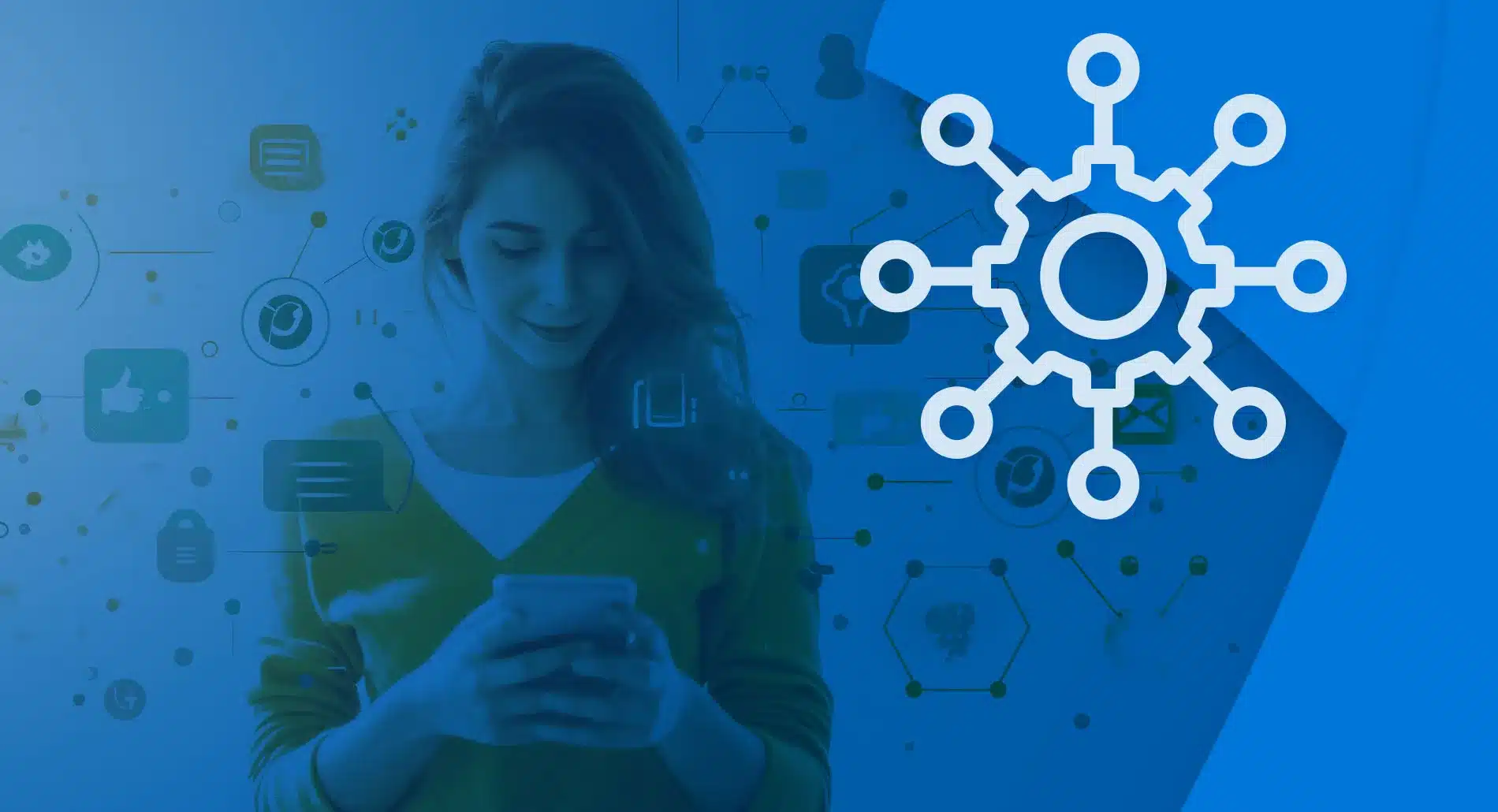Digital marketing, it’s a jungle out there. These days, connecting with customers is a lot like navigating a maze blindfolded. But fear not, because omnichannel marketing automation is here to be your trusty guide through the chaos.
So, what exactly is omnichannel marketing automation? It’s your own personal AI assistant who knows everything about your customers and can reach them wherever they are, whenever they need your products or services.
But it’s not just about bombarding them with messages, it’s more along the line of delivering a seamless and personalized experience across every channel. We’re talking websites, social media, emails, you name it. And let me tell you, when done right, it’s like magic. Customers feel like you’re reading their minds, and you? Well, you’re raking in the conversions and basking in the glow of all the money you are making with AI.
Now, grab your notepad because we’re about to shine a light on the key components of omnichannel marketing automation and how you can do it yourself.
Empower your team with AI that adapts to every client’s needs
Key Components of an Effective Omnichannel Strategy
1. Single Customer View (SCV)
The SCV serves as the nerve center of your omnichannel strategy, aggregating data from every customer touchpoint into one unified profile. Think of it like a digital dossier for each customer, containing insights from their interactions across channels like website visits, social media engagements, and email interactions, among others.
This collective view enables you to deliver personalized experiences. How? By creating targeted messaging that uses a holistic understanding of each customer’s preferences, behaviors, and needs.
Remember, no one likes being sold to. What they are receptive to is seeing a solution to their most pressing problems. Need help connecting the dots for your leads? Check out our prospecting tool: the Snapshot Report.

2. Multichannel Integration
Multichannel integration helps you to create smoother communication during AI lead generation and consistent experiences across all touchpoints. It involves connecting and synchronizing various channels such as:
- Your website
- Social media platforms (Facebook, Linkedin, X, etc.)
- Emails
- SMS
For a marketing automation example, a customer might browse your services on your Facebook page, receive personalized recommendations via email, and complete their purchase on your website—all without missing a beat.
How this works is that this AI integration enhances customer satisfaction by eliminating friction points and maintaining continuity throughout their journey. If you set things up right, by the end, they will be thinking “Huh, that was easier than I thought it would be.”
Did you know? AI can be used for more than just marketing, it is regularly being used for building AI websites too for lead generation. Check out the key components of a high conversion AI business website with Vishal:
3. Marketing Automation Platform
Why wing it when you don’t have to? A strong marketing automation platform empowers you to orchestrate omnichannel campaigns with much better precision and efficiency. How do you know if you found a good one? It should offer features like:
- Comprehensive campaign management
- Advanced analytics
- AI/machine learning capabilities
With a solid marketing automation strategy, you can deliver targeted messages to the right audience at the right time, based entirely on their behaviors and preferences.
More importantly, the increased scalability of these platforms allows you to extend personalized campaigns to multiple places your leads will be looking, reaching your target wherever they are in their customer journey along your AI-powered sales funnel.
Setting Up an Omnichannel Automation System
1. Data Integration
Data integration sets the foundation for your omnichannel strategy, ensuring that information flows where it needs to across all systems.
First, start by connecting data sources to your SCV, including:
- CRM platforms
- Ecommerce databases
- Marketing tools
This integration enables you to consolidate customer data into one, easy-to-find place.
Next, focus on cleaning, standardizing, and enriching the data to ensure accuracy and completeness. But data is not laundry and these terms can be confusing. What we mean by “cleaning” is removing unnecessary fields or datasets, “standardizing” refers to using the same format across datasets, and “enriching” is about adding in missing data that got lost along the way.
By maintaining a high-quality dataset, you can glean valuable insights that will help you deliver better, more personalized experiences to your customers.
How do I keep my data clean: It’s simple, just don’t give it a chance to get “dirty” in the first place. You can do this by prioritizing data governance, enacting standardization procedures, and security protocols to safeguard sensitive information.
2. Channel Setup
Once your data integration is in place, it’s time to configure each marketing channel within your automation platform.
Alright, so what this involves is mapping customer journeys across various touchpoints and designing triggered campaigns based on predefined triggers or events. For example, you might create automated AI email marketing sequences triggered by specific actions taken on your website or opening an email, like this:

As you set up each channel, consider best practices for your AI content marketing strategy to ensure consistency and relevance, but more importantly, to not overwhelm your lead with touchpoints that can come across as spammy. That’s the last thing you want.
Pro Tip: Is data syncing a nightmare because your platforms are not compatible? Or worse, is data flow regularly blocked because you forgot to pay a subscription bill? Sometimes, it’s better to start over fresh. Opt for an omnichannel marketing automation platform that includes everything you need already, such as:
- SEO automation software
- Project management automation
- Task automation tools
- CRM marketing automation
3. Testing and Optimization
Testing and optimization are important components of any successful omnichannel strategy. Before deploying your campaigns, we recommend conducting thorough A/B testing to evaluate different variations and identify what vibes best with your audience.
From there, you can set up analytics to measure key performance metrics across each channel, such as engagement rates, conversion rates, and customer lifetime value.
Once you have your metrics nailed down, you can use these insights to continuously refine and optimize your channel mix, messaging, and targeting strategies.
Why should you continue to shake things up? Customer behaviors and preferences can change over time, so by improving your omnichannel approach, you can improve customer experiences and drive better results for your AI marketing agency.
10 Ways to Implement Automation in Omnichannel Marketing
1. Centralize Customer Data
Centralizing customer data is the backbone of an effective omnichannel marketing strategy. By aggregating data from various touchpoints and channels into a single repository, such as a customer data platform (CDP) or CRM system, businesses gain a more holistic view of their customers’ behaviors, preferences, and interactions.
This more centralized approach enables marketers to create more accurate customer profiles, understand individual journeys across channels, and deliver highly personalized experiences.
For example, a retail company can integrate online purchase data with in-store transaction history to tailor recommendations and promotions based on customers’ past behaviors.
Moreover, by enriching customer profiles with demographic, and behavioral data, small businesses can locate valuable insights and segment their audience more effectively, leading to targeted marketing campaigns and improved engagement.
2. Map the Customer Journey
While we wish that customers followed a linear path on their buying journey, it is rarely that simple. That’s why mapping the customer journey is great for identifying key touchpoints and interactions throughout the buyer’s lifecycle.
By visualizing the customer journey across multiple channels, including website visits, email engagements, social media interactions, and offline interactions, businesses can gain a better understanding of how customers actually interact with their business at each stage of the funnel.
This insight allows marketers to identify opportunities for automation and personalized messaging to smoothly guide customers through the sales process from A-Z.
For instance, a travel agency can map out the customer journey from initial trip research to booking confirmation, enabling them to automate triggered communications, such as abandoned cart emails or booking reminders, to re-engage customers.
3. Automate Email Campaigns
Leveraging behavioral triggers and segmentation helps you send timely and relevant messages to subscribers based on their actions and preferences. What does this look like?
For example, an online retailer can automatically send a welcome email series to new subscribers, introducing them to the brand and offering a discount on their first purchase.
Similarly, abandonment emails can be triggered when a customer visits a product page but doesn’t make a purchase, encouraging them to return to complete their purchase.
4. Implement Chatbots
AI-assisted chatbots have become increasingly popular in omnichannel marketing strategies, offering businesses a scalable and efficient way to provide instant customer support and assistance—we even have one.
By using an AI chatbot for websites, mobile apps, and messaging platforms, businesses can provide 24/7 customer support, answer common questions, recommend products, and facilitate transactions or appointment bookings..
For example, as a digital marketing agency, you can deploy a chatbot on your website to assist prospects with inquiries, product questions, and project tracking. Additionally, chatbots can be integrated with backend systems, such as project management software and order processing, to provide real-time updates and streamline the customer experience.
Furthermore, chatbots can leverage natural language processing (NLP) and machine learning to understand and respond to customer queries more accurately over time.
Pro Tip: When selecting an AI-assisted chatbot for your or your clients website, consider one that allows for multi-channel communication so you can chat with visitors on their preferred platform (ie. SMS, Facebook, or email).

5. Leverage AI and Machine Learning
Ever wonder how some companies seem to know exactly what you want before you even realize it yourself? It’s not magic—it’s AI at work behind the scenes.
AI is regularly crunching numbers and spotting trends in a sea of data. It can figure out what your clients like, how they behave, and even predict what they might want next—like our Snapshot Report.
But here’s where it gets really cool: AI doesn’t stop at number crunching, it’s putting this data to work for you. By tweaking things like who sees what email or when they see it, AI can make sure you’re reaching the right people at the right time.
So, if you’re looking to take your AI consulting business up a notch, AI is definitely the way to go.
6. Automate Social Media
Running your social media can feel like juggling a dozen balls at once. That’s where social media automation can take some of the pressure off.
Imagine having your posts drafted, lined up and ready to go, even while you’re on vacation. Social media automation tools are a great ally, helping you schedule posts ahead of time so your feed stays fresh and lively without you having to hover over it 24/7.
But these tools are not just good for scheduling, they’re also great listeners too. Yep, they can listen in on public conversations, track shout-outs, and even jump in with timely responses.
Just picture this: your customers have questions, and your chatbot springs right into action, providing answers in seconds. This is not only saves you and your marketing team heaps of time, but also makes you look good in the eyes of users too because they don’t have to wait around to hear from you.
So, whether you’re a budding AI startup or a an established digital agency, automating your social media tasks is a no-brainer.
7. Retarget Ads Across Channels
Ever felt like your ads are just shouting into the void? We’ve all been there, and retargeting might be just what you need.
With tracking pixels and cookies, businesses can play detective and find those elusive visitors who checked out your site but didn’t hit that “buy now” button.
Here’s an example: You’re browsing online for some new sneakers, and suddenly, those exact shoes start popping up everywhere you look—on Facebook, Google, you name it. That’s retargeting in action, reminding you, “Hey, remember those awesome shoes you were eyeing? They’re still here, waiting for you.”
And the best part? You don’t have to lift a finger. Automation tools like Vendasta MatchCraft or Google Ads automation handle all the nitty-gritty stuff—like tweaking ad designs, choosing the perfect audience, and bidding on ad space—so you can sit back, relax, and watch those conversions roll in.
8. Trigger SMS and Push Notifications
Ever wished you had a direct line to your customers’ pockets? Well, with automated SMS and push notifications, now you can.
Think about it: You’re out and about, minding your own business, when ping—you get a notification from your favorite travel app reminding you to check in for your upcoming flight. No more frantic searching for confirmation emails, it’s all right there at your fingertips. How convenient is that?
But here’s where it gets really exciting: Businesses can use a potential customer’s location to send targeted notifications when they’re close by. Suddenly, that coffee shop you’ve been eyeing sends you a sweet deal on your favorite brew, just as you’re passing by. It’s like they knew you were craving a caffeine kick. Its not coincidence, it’s AI.
With automated SMS and push notifications, digital agencies can deliver personalized messages that hit the spot every time, keeping prospects and clients engaged and driving those all-important conversions.
9. Automate Loyalty Programs
Ever been part of a loyalty program that felt more like a hassle than a perk? With automated loyalty programs, you can say goodbye to those days.
It looks a lot like this: You make your first purchase from an online store, and just like that, you’re automatically enrolled in their loyalty program after checking one little checkbox. No lengthy forms to fill out, no hoops to jump through—just instant rewards waiting for you.
As you keep shopping, you rack up points or unlock exclusive discounts with each purchase. And thanks to automation, you’re always in the loop about your rewards status and upcoming deals, whether it’s through email, text, or push notifications.
By automating loyalty programs, you can turn one-time buyers into lifelong clients, boosting retention rates and paving the way for long-term AI agency growth.
10. Analyze and Optimize
Ever wonder what makes some marketing campaigns smash hits while others quickly fizzle out? It’s all about that sweet combo of analysis and optimization.
With this type of strategy, it’s like having a backstage pass to the inner workings of your marketing efforts. It allows you to deep into the data, tracking every click, open, and conversion across all your automated campaigns.
And boy, does it pay off. By crunching the numbers and digging into key metrics like open rates, clicks, and ROI, you can uncover golden opportunities to supercharge your campaigns.
On top of that, A/B testing lets you experiment with different creatives, timings, and messages to see what really makes your audience tick.
Armed with insights from analytics and A/B testing, you’re not just guessing anymore. You’re refining your strategies, fine-tuning your campaigns, and serving up experiences that keep your clients coming back for more.


